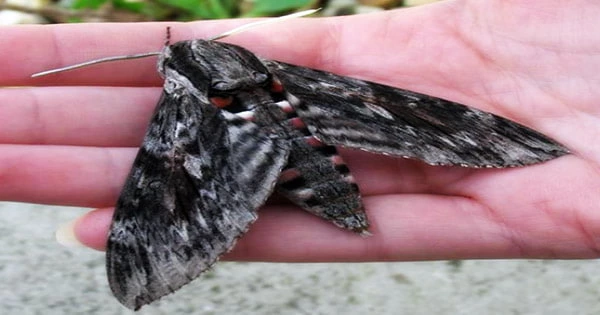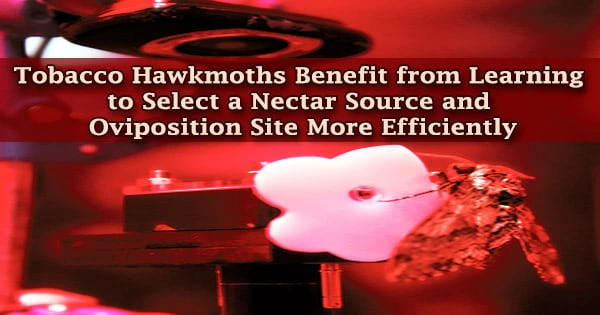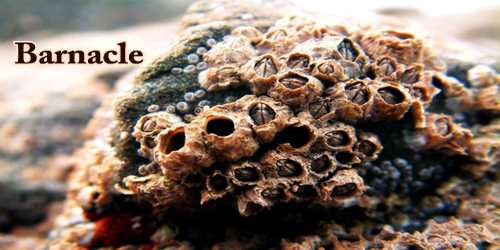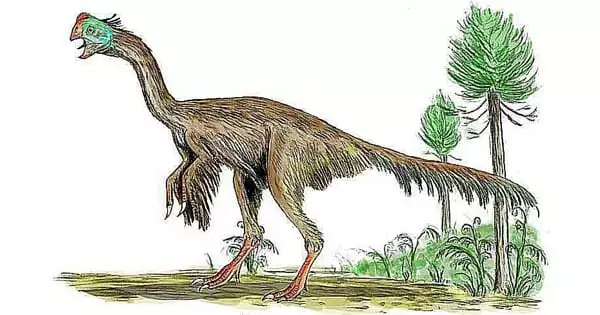Scientists from the Department of Evolutionary Neuroethology, directed by Bill Hansson and Markus Knaden, had previously demonstrated that tobacco hawkmoths can learn scents as signals to a nectar source that they first found disagreeable. Insects have been discovered to be extremely adaptable to many dietary sources.
The researchers sought to see if learning had an effect on egg-laying in this investigation. Female tobacco hawkmoths were given the option of depositing their eggs on either wild tobacco Nicotiana attenuata or sacred datura Datura wrightii leaves in behavioral trials. Nave moths that had never placed an egg on a plant before exhibited an instinctive predilection for the sacred datura leaves.
Tobacco hawkmoths learned this plant even when only one leaf was available for oviposition and the experience was thus decoupled from the flower as a nectar source.
Nandita Nataraj
In the second series of trials, untrained females were educated to deposit their eggs on either tobacco or datura leaves, forcing the moths to choose between the two plant species. The researchers sought to discover if the training had any influence on choosing one plant over the other in a third phase.

“We were very surprised to observe that even a single egg-laying experience was sufficient to direct a moth’s interest to the very plant on which an egg had previously been laid. Tobacco hawkmoths learned this plant even when only one leaf was available for oviposition and the experience was thus decoupled from the flower as a nectar source,” first author Nandita Nataraj summarizes the results. Apparently, successful oviposition is in itself rewarding to the moth and influences future behavior.
Overall, the trials demonstrated that the choice for tobacco fell more quickly than the desire for datura leaves, which they naturally favor. Innate preference, in combination with successful learning, appears to be an evolutionary advantage that permits the heavy insect, which expends a lot of energy flying and hovering, to lay its eggs more effectively and preserve resources. If it does not have to look for host plants for an extended period of time, it is also better protected against predators.
Tobacco hawkmoths use their antennae to learn odors, but not their second nose, the tip of their proboscis. It not only remembers floral scents that bring them to a nectar source when foraging, but it also remembers host plants for more effective egg-laying. Tobacco hawkmoths use their antennae to identify smell signals that lead them to blossom.
Markus Knaden’s team discovered that olfactory neurons on the tip of the proboscis function as a second nose in tobacco hawkmoths in a 2016 research. As a result, the researchers sought to see if the moths can learn smells using this extra sensory organ.
“The biggest challenge for our study was the design of an artificial flower that retains the odor inside and does not emit it. If the odor were also perceptible outside the flower, we would not have been able to distinguish between odor learning with the antennae and with the proboscis,” says first author Elisabeth Adam, describing the special feature of the experimental setup. Crepuscular insects follow visual signals in their natural surroundings as well. As a result, the researchers created a blue acrylic flower that dependably attracted moths while releasing no odor.
Tobacco hawkmoths do not learn scents that they experience just with their proboscis, according to behavioral trials in the wind tunnel. As a result, previous exposure to particular smells inside the bloom had no effect on foraging behavior.
“We know from previous studies that higher brain regions are involved in learning. Perhaps the proboscis serves more as a tactile or gustatory organ for judging the quality of bloom. It therefore presumably perceives odors differently and does not pass odor information on to higher brain regions,” Elisabeth Adam explains the results.
The tobacco hawkmoth Manduca sexta: an ideal model to study the effects of learning on odor-guided behavior in an insect
Even in the laboratory, tobacco hawkmoths display a variety of complicated behaviors. Following a plume suggesting flower nectar or discriminating between host and non-host plants to lay their eggs so that their progeny can grow are both ecologically interesting activities.
“We already know a lot about olfaction in this insect, in particular which brain regions are involved in the transmission and processing of olfactory cues. The moths are therefore ideal models to study odor perception and learning from the detection of an odor molecule via neuronal processing to the resulting behavior,” summarizes study leader Markus Knaden.
More research will be done to see if tobacco hawkmoths can learn to deposit their eggs on plants that aren’t native to their host region, as well as a variety of various flowers and host plants. Additional research will look at how the moth evaluates floral scents using the olfactory neurons on its proboscis.
















